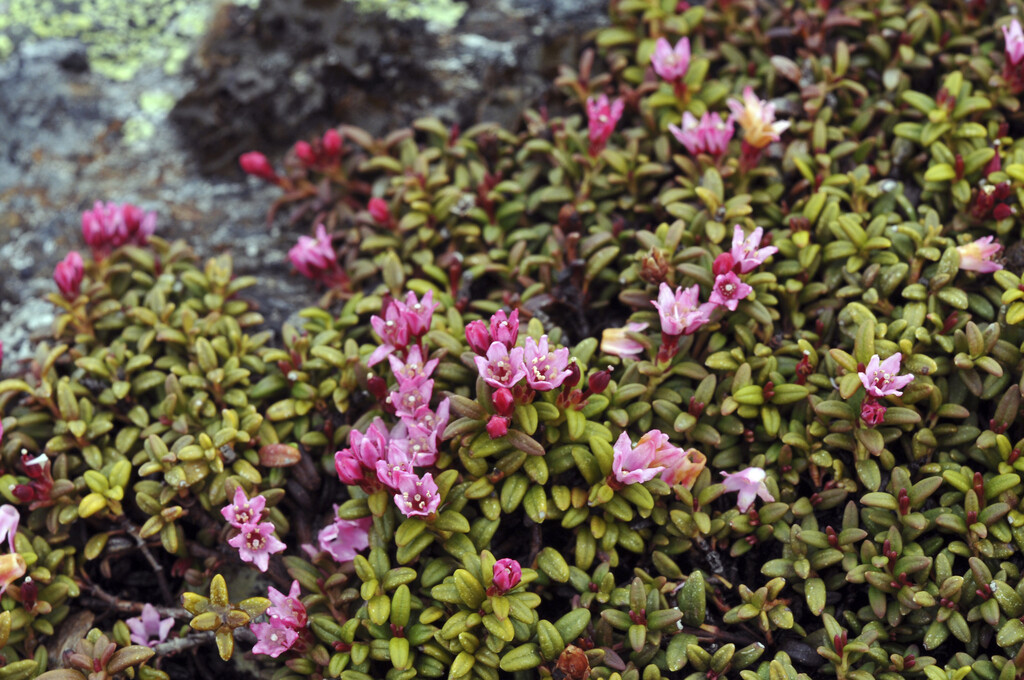Kalmia procumbens
alpine azalea
A prostrate, native, evergreen shrub forming low mounds or large mats of creeping stems rooting freely along the ground with tiny, leathery dark green leaves about 8mm long. Clusters of small, bell-shaped pink flowers produced at the ends of the stems in late spring
Synonyms
Loiseleuria procumbensAzalea procumbens
Size
Ultimate height
Up to 10cmTime to ultimate height
2–5 yearsUltimate spread
0.5–1 metresGrowing conditions
Moisture
Moist but well–drainedpH
AcidColour & scent
| Stem | Flower | Foliage | Fruit | |
| Spring | Pink | Green | ||
|---|---|---|---|---|
| Summer | Green | |||
| Autumn | Green | |||
| Winter | Green |
Position
- Partial shade
Aspect
East–facing or North–facing
Exposure
Exposed or Sheltered Hardiness
H6Botanical details
- Family
- Ericaceae
- Native to GB / Ireland
- Yes
- Foliage
- Evergreen
- Habit
- Matforming, Trailing
- Potentially harmful
- Harmful if eaten. Wear gloves and other protective equipment when handling. Pets (dogs, cats, rabbits, tortoises): Harmful if eaten. For further information and contact numbers regarding pets, see the HTA guide to potentially harmful plants
- Genus
Kalmia are evergreen shrubs with simple, leathery leaves and racemes or corymbs of bowl-shaped flowers in spring or summer
- Name status
Correct
- Plant range
- Northern Hemisphere (Arctic, sub-Acrtic, sub-Alpine)
How to grow
Cultivation
Grow in moisture-retentive, humus-rich, acid soil in part shade, or in sun if soil remains reliably moist. Mulch anually with leaf mould or composted pine needles
Propagation
Propagate by semi-ripe cuttings in midsummer or by layering in late summer
Suggested planting locations and garden types
- Cottage and informal garden
- Low Maintenance
- Banks and slopes
- Ground cover
Pruning
No pruning required
Pests
Generally pest-free
Diseases
May be susceptible to honey fungus in gardens where it is present but insufficient data to determine degree of susceptibility
Get involved
The Royal Horticultural Society is the UK’s leading gardening charity. We aim to enrich everyone’s life through plants, and make the UK a greener and more beautiful place.
